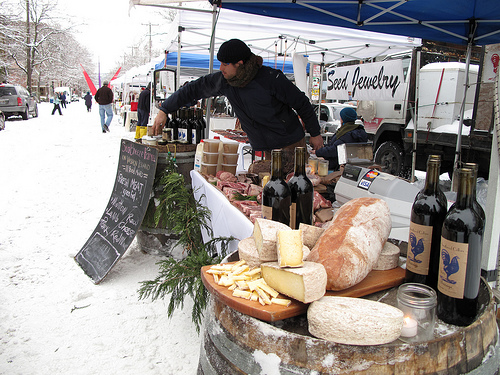Demand for local food drives expansion of year-round farmers' markets

Fueled by a growing demand for locally produced food year-round, the number of farmers' markets extending their operations into winter months is on the rise, according to U.S. Department of Agriculture data. Northern states are leading the charge by pioneering techniques to extend growing seasons with indoor gardening methods.
Nationwide, at least 900 farmers' markets run between November and March, a 17 percent increase from 2008. Traditional, weekly farmers' markets typically begin in the spring and end by October. Instead of closing up shop when the weather gets cold, many farmers' markets continue to supply produce on a once-a-month model.
Farmers who grow for these winter markets are planting crops later in the season, assisted by the consistently warm environment of greenhouses and indoor hydroponic systems. Other growers see the winter market as a way to sell vegetables from the regular season that they've stored in root cellars. Some winter vendors offer canned and preserved products from their autumn bounty. Interestingly, several northern states maintain the largest number of winter markets. Massachusetts, New York, Pennsylvania, Ohio, New Jersey, Connecticut and Michigan top the list.
A USDA survey found that year-round markets tend to be more profitable. Markets that operated for more than seven months in a year brought in three times the sales revenue per month and twice as many weekly customers as those that didn't. The AP reports:
“The trend toward year-round markets fits in with overall growth in farmers markets. The number nationwide grew 16 percent from 2009 to more than 6,100 nationwide this year, according to the USDA's 2010 farmers market directory. Many markets have been reporting record sales in recent years.”
These statistics are further proof that local food economies are a necessity, rather than a luxury, in harsh economic times.




